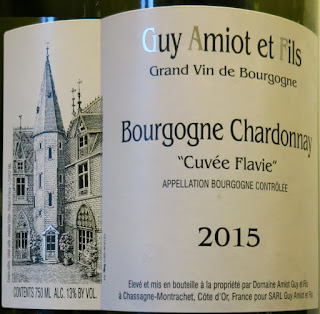My husband and I are interested in how best to vinify our Chardonnay. This year, we have 2 small batches of Chardonnay that we fermented in stainless steel kegs and in one keg, we added malolatic bacteria to carry out the
conversion of malic to lactic acid.
Since Chardonnay is a neutral grape variety, it can be vinified in a variety of ways in order to affect its flavor profile. A few techniques that are employed include:
- skin maceration
- barrel and/or stainless steel fermentation
- selected or indigenous yeasts
- malolactic fermentation
- aging in barrels with or without lees
I came across a really good article published in 2014, called
Factors Influencing the Aroma Composition of Chardonnay Wines.
In this article, the authors breakdown the aroma and flavor compounds and precursors derived from (1) grapes, (2) fermentation, and (3) aging that contributed to the various styles achievable when making Chardonnay.
So how do you like your Chardonnay? Oaked, buttery, fruity, searingly acidic, with so many styles to choose from, what defines quality in a Chardonnay? Although Chardonnay is a neutral white variety, some of the chemical compounds that contribute to a particular Chardonnay style can be found in the grape and can determine "quality" as well as "typicity". So, what are these compounds?
The above illustration shows compounds that are in grape berries or, more often, have precursors which are present in berries that are modified during fermentation or aging.
The compounds 1,1,6-trimethyl-1,2-dihydro-naphthalene (TDN), β-damascenone, and 3-oxo-α-ionol also known as C13-norisoprenoids, are formed during berry ripening from carotenoids in the grapes. β-damascenone and linalool are compounds that can be used to identify a young wine as a Chardonnay.
The "lemon balm" aroma can be attributed to the presence of β-damascenone at perceptible concentrations. At higher concentrations, β-damascenone smells of “apple”, “rose”, and “honey”.
Since wine is a living entity, evolving and changing as time passes, these fresh fruity notes can change with age.
Aging of Chardonnay brought about a loss of the fruity and floral characters associated with a young wine. The concentrations of β-damascenone and linalool declined with wine age. The loss of the acetate esters, acid catalyzed hyrolysis of ethyl esters of short-chain fatty acids, and the acid-catalyzed rearrangement linalool into less aromatically intense compounds such as α-terpineol contributed to the loss of fruity and floral notes.
My next few blogs will deal with fermentation and aging derived compounds and their impact on the aroma and flavor profile of Chardonnay.
Thanks for tuning in!
References:
1. Gambetta JM, Bastian SEP, Cozzolino D and Jeffery DW.,
Factors influencing the aroma composition of Chardonnay wines, 2014, J Agric Food Chem 62:6512–6534.
Illustration created from Table 2. Characteristics of Grape-Derived Odorants Important to Chardonnay Wine Typicity, pg. 6513 of the reference above.
2. Joanna M. Gambetta, Leigh M. Schmidtke, Jiaming Wang, Daniel Cozzolino, Susan E.P. Bastian, David W. Jeffery,
Relating Expert Quality Ratings of Australian Chardonnay Wines to Volatile Composition and Production Method
American Journal of Enology and Viticulture Jan 2017, 68 (1) 39-48; DOI: 10.5344/ajev.2016.16058














































